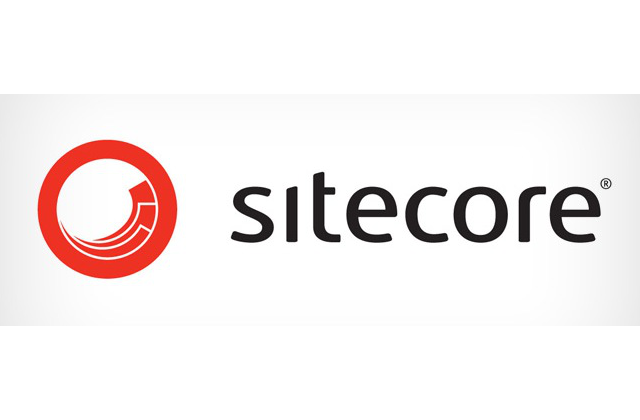Understanding the Roles in a Sitecore Implementation
— September 14, 2016Sitecore is a powerful web Content Management System (CMS) and Experience Platform (XP) that can serve as a cornerstone for an organization’s digital strategy. Implementing Sitecore is not just a one-time product deployment but an ongoing initiative requiring integration with various enterprise systems. The lifecycle of a Sitecore solution involves constant updates, redesigns, and enhancements to address evolving requirements, ensuring that the platform delivers consistent value over time.
Below is an in-depth exploration of the key roles involved in a Sitecore implementation. Each role contributes to the project’s success and ensures the system aligns with organizational goals while functioning efficiently.
Developer
Developers play a foundational role in Sitecore implementations. They are responsible for turning requirements into functional features within the platform. This includes writing code to implement custom functionalities, integrating external systems, and configuring Sitecore’s many extension points. Developers are also often tasked with architecture design, debugging, testing, and troubleshooting. Their work is not limited to backend logic; it frequently extends to ensuring front-end compatibility and optimizing performance.
In some cases, particularly in smaller implementations, a single developer may be required to take on responsibilities traditionally handled by other roles. For example, they might also manage release pipelines, handle content modeling, and address system administration tasks. This broad scope of responsibility highlights the critical importance of skilled developers in Sitecore projects.
Executive Sponsor
An executive sponsor provides leadership and vision for the CMS initiative. This role is typically held by senior management who understands how the platform supports broader organizational objectives. The executive sponsor advocates for the CMS within the organization, securing resources and budget for its implementation and maintenance.
While the executive sponsor’s involvement might not always be full-time, their influence is pivotal. They help define high-level objectives, establish priorities, and ensure alignment between the CMS and business strategies. Often, multiple executives, such as the Chief Marketing Officer (CMO) or Chief Revenue Officer (CRO), may contribute to this role. Their combined efforts ensure that the implementation receives adequate support and is aligned with strategic goals.
Stakeholder
Stakeholders encompass all individuals and groups with an interest in the CMS implementation. This includes executive sponsors, content owners, marketers, and technical teams. Stakeholders are the primary source of requirements and provide ongoing feedback to refine and optimize the platform.
Their involvement is critical during planning and development. They contribute insights about user needs, desired functionalities, and potential integrations. By aligning stakeholder expectations with technical capabilities, the project team ensures that the solution delivers tangible value to its users.
Sitecore Solution Partner
Working with an experienced Sitecore development partner can significantly enhance the quality of the implementation. Solution partners bring specialized knowledge, having navigated multiple Sitecore deployments. Their expertise helps organizations avoid common pitfalls and ensures that best practices are followed throughout the process.
While it is technically possible to implement Sitecore without external assistance, the value of a solution partner cannot be overstated. They provide guidance on complex configurations, integrations, and optimizations, enabling faster delivery of a high-quality product. Organizations that collaborate with sitecore solution partners are more likely to achieve a scalable and efficient system that meets their needs.
Project Manager
The project manager is the central coordinator of a Sitecore implementation. They are responsible for translating requirements into actionable tasks, assigning these tasks to appropriate team members, and ensuring progress aligns with the project timeline. The project manager acts as the communication bridge between stakeholders, developers, and other contributors.
A key aspect of their role is managing expectations. By maintaining clear lines of communication and tracking deliverables, they ensure that all parties have a shared understanding of goals and progress. This coordination minimizes delays and helps resolve issues quickly.
Business Analyst
Business analysts play a critical role in defining and documenting project requirements. They work closely with stakeholders to understand business objectives and translate them into detailed specifications for the software development team. Their expertise ensures that the technical implementation aligns closely with organizational goals.
Business analysts often serve as the bridge between non-technical stakeholders and technical teams. They clarify complex concepts, identify potential risks, and ensure that user needs are fully addressed in the final solution. Their contributions are instrumental in creating a platform that balances functionality with usability.
Creative (UX)
The creative team is responsible for the visual and sensory aspects of the Sitecore implementation. They focus on user experience (UX) design, developing elements such as color schemes, typography, imagery, animations, and other visual components. These elements enhance usability and align the platform with the organization’s branding.
Creatives work closely with designers and developers to ensure that visual concepts are translated accurately into the final product. Their role is essential in creating a platform that is both visually appealing and functionally effective.
Designer (Web)
Designers bridge the gap between creative concepts and technical implementation. They handle front-end development tasks, including HTML, CSS, and JavaScript coding. Their work ensures that designs are responsive, accessible, and compatible with modern web standards.
Designers often collaborate with developers to integrate front-end elements with backend functionalities. This collaboration ensures a seamless user experience across devices and platforms. Their attention to detail is critical in maintaining the platform’s visual integrity.
Architect
Architects are experienced developers who design the overall structure of the Sitecore implementation. They ensure that the system is scalable, reliable, and efficient. Architects plan the integration of various components, define system performance benchmarks, and establish coding standards.
Their work is foundational to the success of the project. By addressing potential challenges early in the process, architects minimize risks and create a framework that supports future growth. Their expertise in Sitecore’s architecture ensures that the platform meets both current and future needs.
System Administrator
System administrators are responsible for the operational health of the Sitecore platform. They manage servers, monitor system performance, and address security concerns. Their role also includes implementing backups, ensuring redundancy, and maintaining system uptime.
Administrators play a critical role in supporting both development and production environments. Their proactive monitoring and maintenance efforts ensure that the platform remains stable and performs optimally.
Information Architect
Information architects focus on organizing and structuring content within the Sitecore platform. They define content hierarchies, metadata schemas, and tagging structures. Their work ensures that content is easily accessible and manageable for users.
This role is essential for creating a CMS that supports efficient content management. By establishing clear guidelines and structures, information architects enable content contributors to work more effectively and improve the overall usability of the platform.
Content Contributors
Content contributors bring the platform to life by creating and managing content. Their work aligns with the organization’s content strategy, ensuring that the platform delivers relevant and engaging material to its audience.
Contributors often use the CMS to add, edit, and organize content. Their familiarity with the platform is crucial, as they are responsible for maintaining content quality and consistency over time.
Testing
Testing specialists ensure the quality and reliability of the Sitecore implementation. They conduct various tests, including unit tests, integration tests, performance tests, and quality assurance checks. Their work identifies potential issues and verifies that the platform meets its requirements.
Effective testing is critical to delivering a stable and functional platform. By addressing issues before deployment, testing specialists help maintain user trust and system reliability.
Release Management
Release management oversees the deployment of Sitecore solutions. This includes managing source code, automating deployment processes, and ensuring that updates are applied consistently across environments. Release managers coordinate with developers, system administrators, and stakeholders to minimize disruptions during deployments.
Their role ensures that new features and updates are delivered smoothly, maintaining the platform’s functionality and user experience.
Conclusion
A successful Sitecore implementation depends on the coordination of these roles. Each role brings unique skills and perspectives to the project, contributing to a platform that meets organizational goals while delivering a high-quality experience for users.





